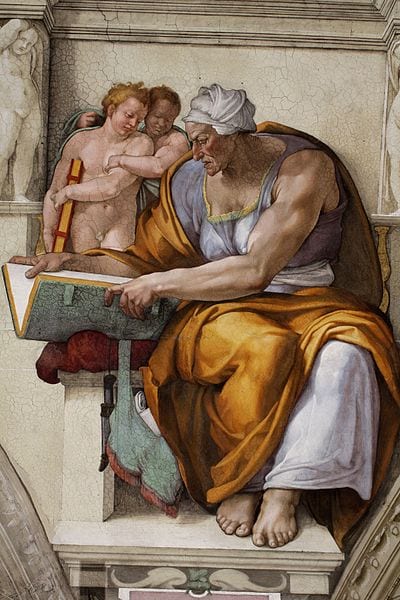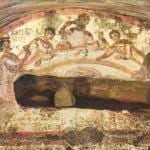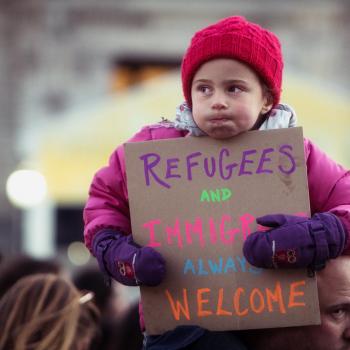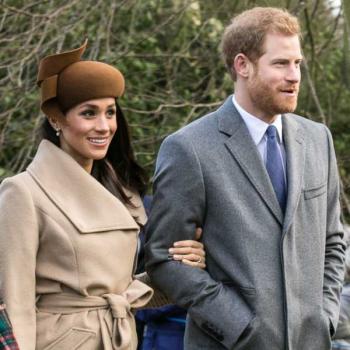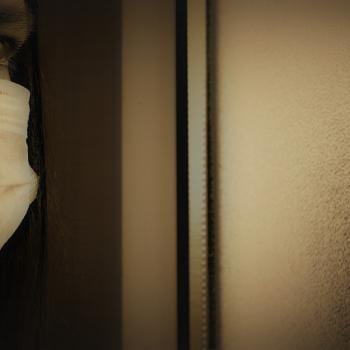I grew up in what some might consider a “syncretic” religious culture. My mother was Jewish, though no longer practicing. My father had been brought up Methodist, but converted to Catholicism, though he wasn’t practicing, either. We kept certain Jewish feast days, made a big deal out of Christmas, prayed the “Hail Mary,” and sang old-timey Gospel songs in the co-op my mother founded with her hippie artsy Mormon friends. Some Sundays I went to the Episcopal church with my grandmother, and liked the quiet dignity of its ritual and music. Other Sundays my family went to a non-denominational charismatic church in an abandoned warehouse, where we were one of only a few white families.
In those days I didn’t yet understand that the area where we lived was a hotbed of racial injustice, or that being Jewish made me a target for the very active KKK. I didn’t know I couldn’t mix and match my religious practices. Eventually my whole family converted to Catholicism, at a time when I was more interested in horses, books, and boys than in religion, but after a brief period of dabbling in atheism, I started getting enthusiastic about Catholicism, in my freshman year of college. I was studying philosophy, and had been accepted in the then-exclusive Great Books program, where we reveled in what some might call the glories of Western Civilization, even though the classics are really more a testament to the vibrancy of diversity, the way multifarious influences come together in a polyphonic tradition.
The nature of the university being what it was, it was impossible for me not to imbibe a certain amount of unconscious white supremacy, ethno-nationalism, and general chauvinism as I breathed in the Great Books. Some would say that this is all an inevitable consequence of a classical education. I disagree; classical education properly undertook should open, rather than close the mind to revelations and insights from different cultures, and the best way to deal with the fetishization of the “western canon” by white nationalists and their sort is to reclaim it from them.
The Canon – Not Really All That “Western”
It also helps to remind them that east and west are mere constructs, and that works like the Bible and the Iliad emerged in a liminal zone between the cultures we designate “east” and “west.” And even if much of the canon involves drawing out and embellishing on tradition (i.e., fanfiction), much of it also involves revolutionary stances. Aquinas’ works, for instance, were looked askance in his day. And Dante, with his emphasis on the use of the vernacular, and on separation of church and state, as well as his appropriation of erotic literary traditions for religious purposes, ought to be recognized as cutting-edge and revolutionary, not as a staid fuddy-duddy repeating old tropes. What we call the tradition didn’t die. It simply kept on growing, branching out. It drew on other traditions, enabling us to connect with them and look back on other roots as deep and vital as the ones out of which the Western Canon was born.
While I did inherit a number of prejudices I have since spent several decades trying to shake off, I also was made aware, repeatedly, that this ability to appreciate and draw on many different cultures for Truth and Beauty was specifically Catholic. The literary arts of the pagan Greeks? We can use those! European folklore involving witches and trolls? This has its place as well! Medieval culture in particular seemed to me to be exceptionally vital and exuberant, blending as it did trends from the Hebrew and Roman roots of Christianity, pre-Christian folk traditions, and the ongoing philosophical dialogue coming down from the Greeks and Romans, through Muslim and Jewish philosophers, and into the scholastic practice.
Catholicism as Culturally Rich – And Culturally Diverse
For many years, I understood my Catholic tradition to be a tradition that celebrated art, culture, beauty, and scholarship from all sources. Unlike certain Puritan or Protestant traditions that rejected anything seemingly Other, or pagan, we embraced it – “baptized” it, was the term we usually used.
What I didn’t think about was how often, in baptizing other traditions, we were appropriating them. It didn’t occur to me how much of our melting-pot of religious art existed because of mission work that was just a squeak away from being pure colonialism. What i didn’t realize was that the “Christianity” of so many of my neighbors in the quiet Southern county I lived in as a child was really just white supremacy, with church bells on.
I know now that there are many problematic elements in our diverse religious and cultural traditions, thanks to a history in which the Church repeatedly mistook itself for Empire. But I still feel strongly that attraction to a religious sensibility that is multifarious, diverse, and unafraid. I love the old cathedrals for their artistic splendor, and Renaissance art for its daring. European Catholics whitewashed the Holy Family and the early church, yes – but that means that any other culture should be free to depict God become human according to their own traditions. While my own preference would be for an iconography that emphasizes the Jewish-ness of Jesus and Mary, it is appropriate for the sacramental imagination for them to be portrayed also as African, Asian, Indigenous American, and so forth.
This is the Catholicism I signed up for.
Catholicism as a Cult of Authority
But what I am seeing right now is a movement in Catholicism to make it a quasi-European cult of authority, militarism, sexual repression, and patriarchy. The reactions to the Amazonian Synod, culminating with the theft and desecration of two sacred images presented to the pope by indigenous Catholics, make it clear that there is a significant faction that wants the church to be more like a social club for little wannabe Emperor Octavians: us only, no foreigners, rule of law, obsessiveness over purity. Anything that seems different from the relatively modern form of European Christianity – if it can be called European, or Christian – they regard with suspicion and even terror. Their attitude is not one of philosophical inquiry or of Gospel openness, but rather of militarist cosplay: defending some imaginary boundaries of a church that was, supposedly, founded to be for the whole world.
This is not the Catholicism I signed up for. This hatred and distrust of anything foreign, repression of creative impulses, punishing of free speculation, celebration of authoritarian force, denigration of women, denigration of foreigners, denigration of anyone queer or other, fear of any cultural trends that didn’t occur within a very narrow swathe of white western modern Christianity – this is not my church.
Or so I want to say.
Yet at the same time I have to face the troubling reality that for centuries, even while the church was producing glorious art and music, as well as vibrant folk traditions across different cultures – while it was often a force for justice and liberation – it was also being used as an instrument of oppression, a validation for war and torture, an excuse for colonization and enslavement. I might have to face the fact that this is, more than I care to admit, the Catholicism I signed up for. And it would be irresponsible for me to celebrate the good and beautiful elements that have enriched my life without doing all I can to oppose the forces of injustice which have made other lives miserable.
https://commons.wikimedia.org/wiki/File:%27Cumaean_Sibyl_Sistine_Chapel_ceiling%27_by_Michelangelo_JBU35.jpg

